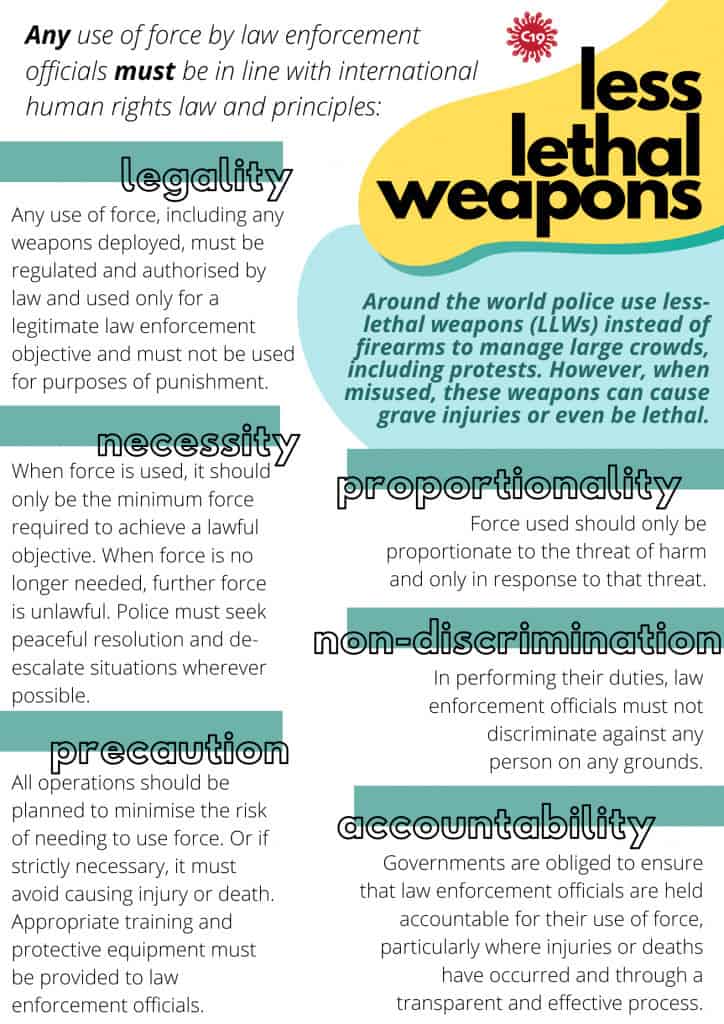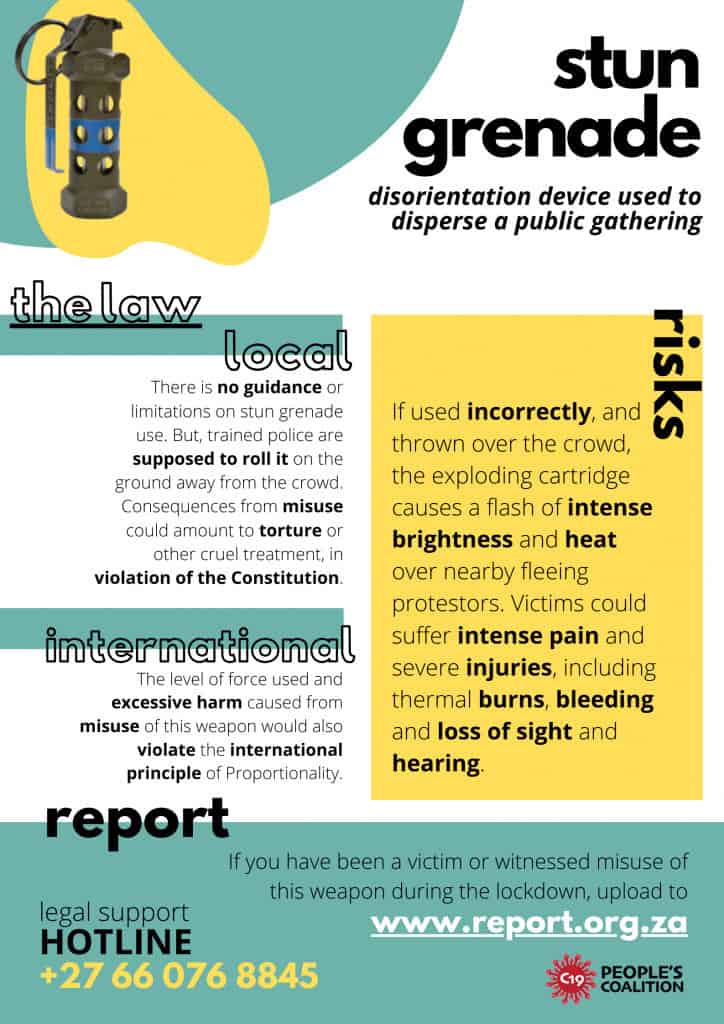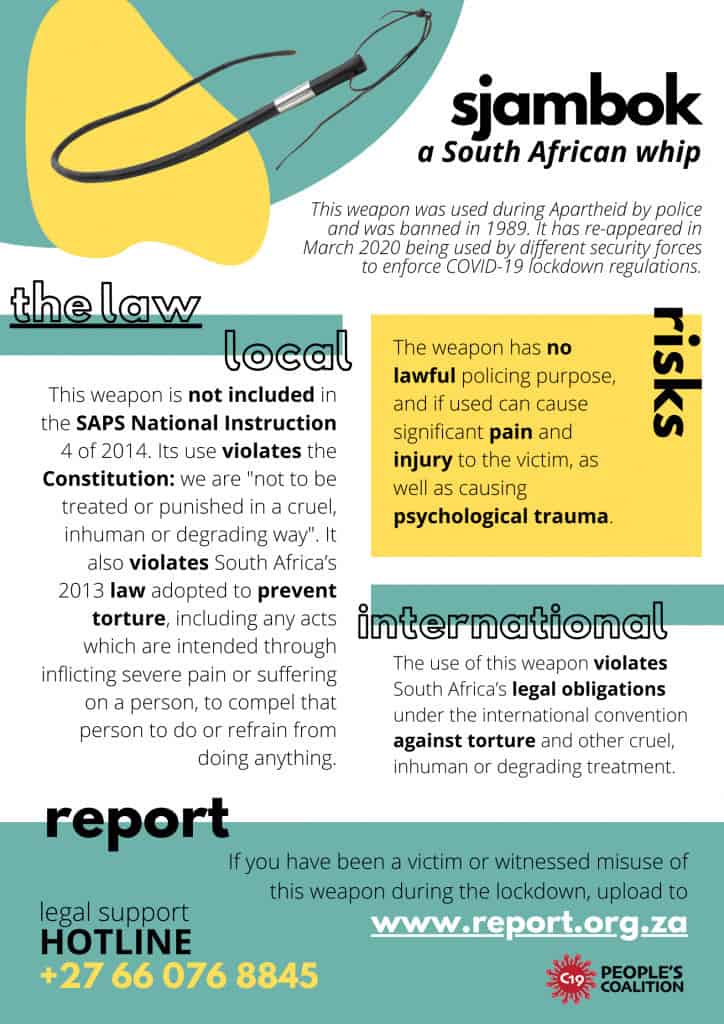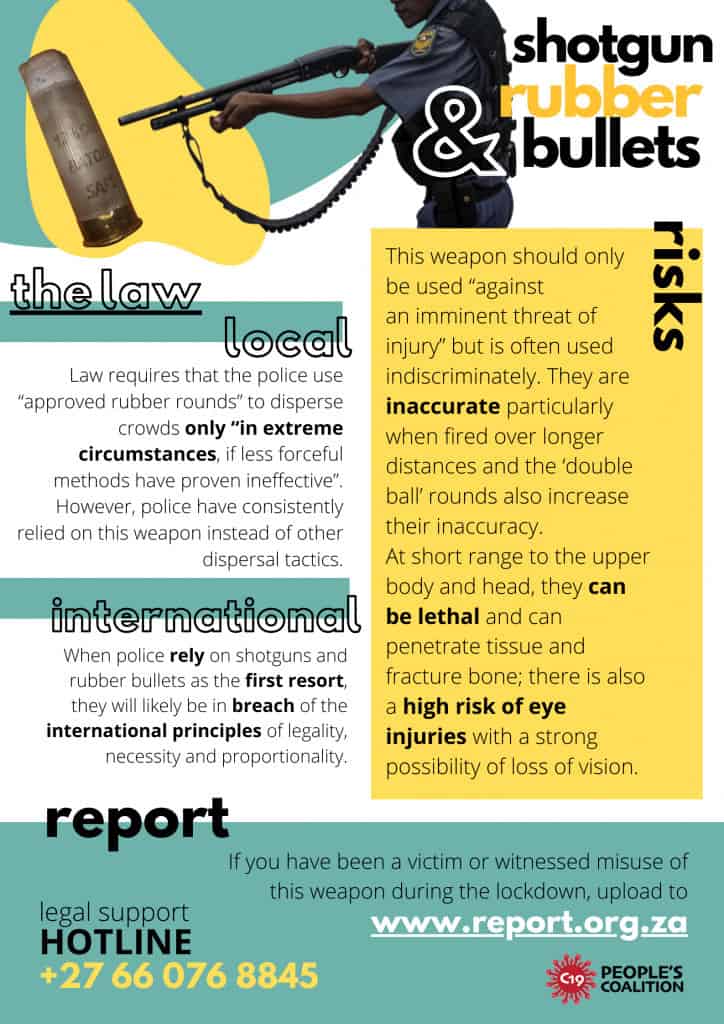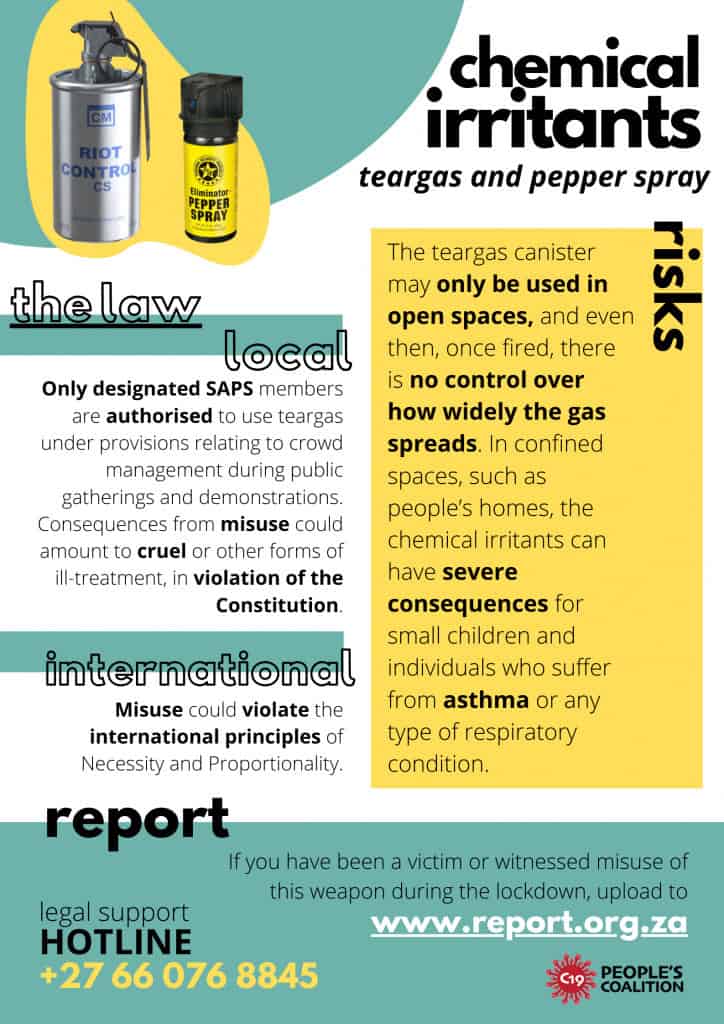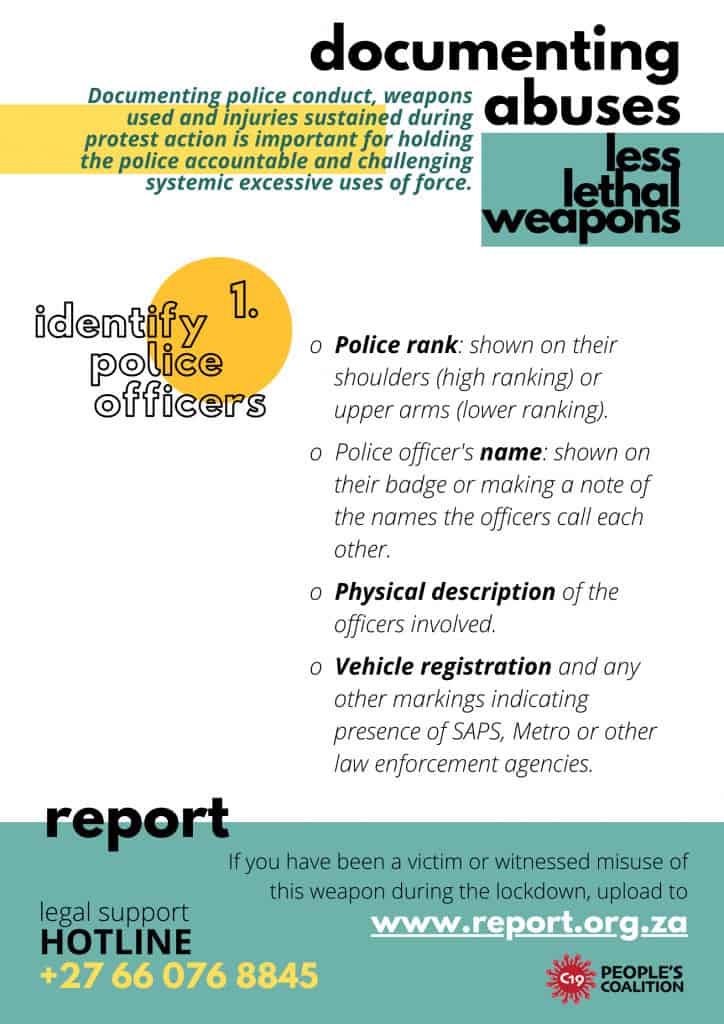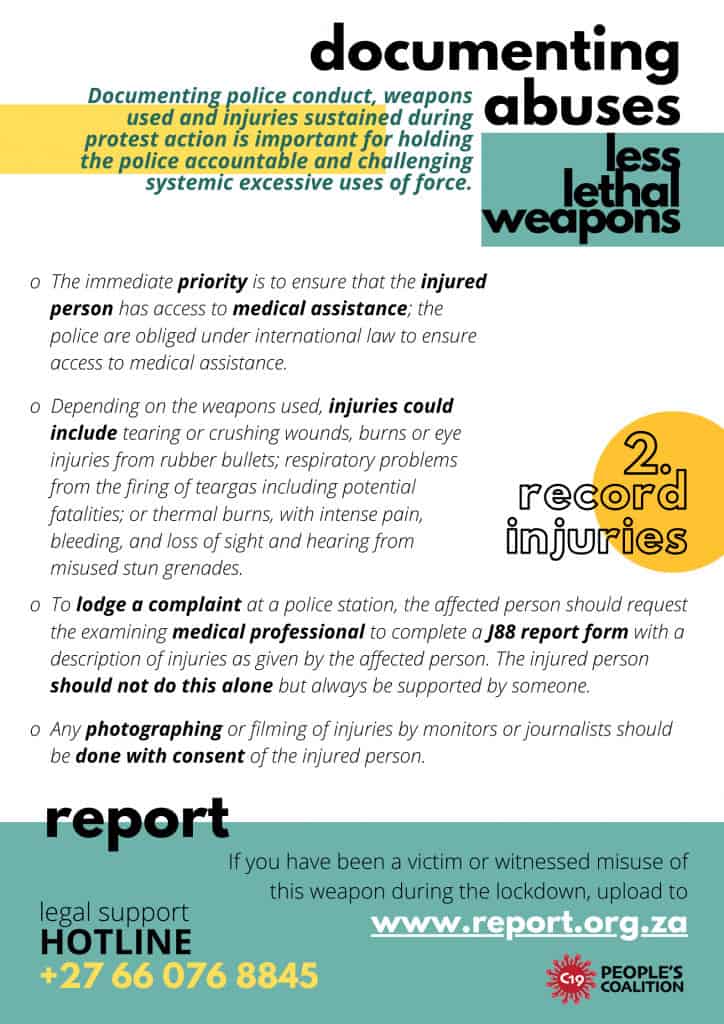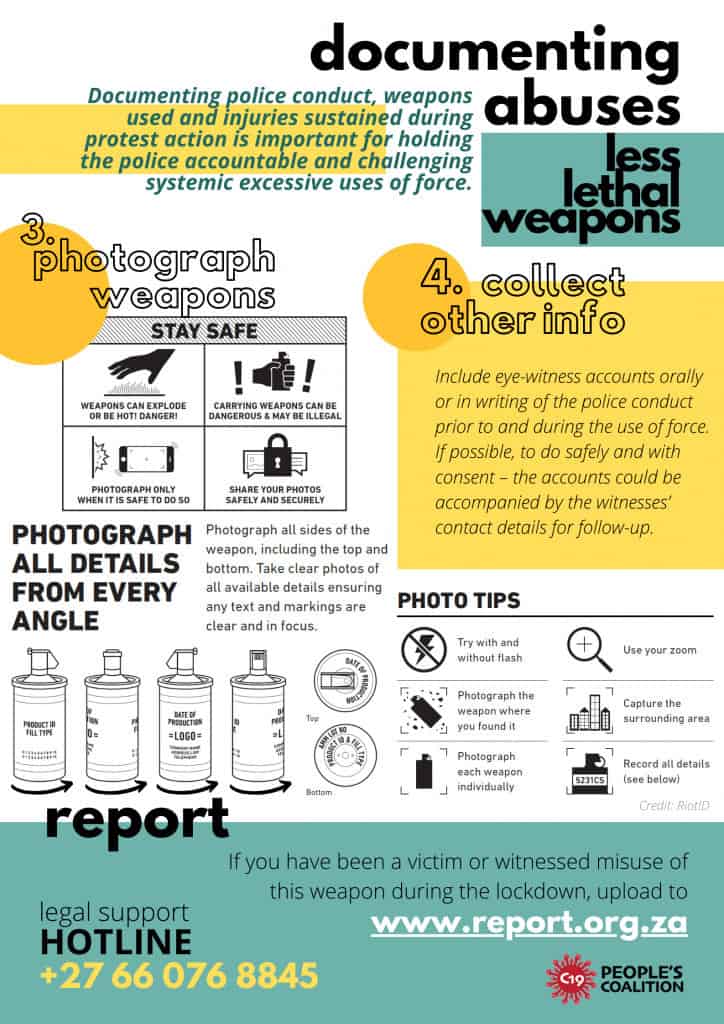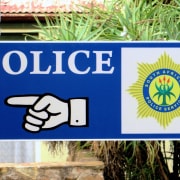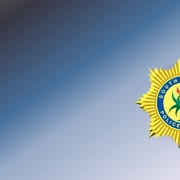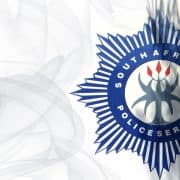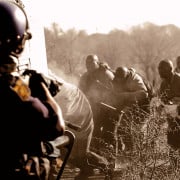|
Getting your Trinity Audio player ready...
|
Members of the South African Police Service. Photo: GroundUp.org.za.
Rubber bullets, tear gas, water cannons, or stun grenades – these are some of the less-lethal weapons police in South Africa use to manage large crowds during unruly protest action. Their colleagues around the world do the same.
However, while these weapons are touted as less-lethal, their misuse can lead to severe injuries or even death.
This set of infographics, prepared by the C19 People’s Coalition: Anti-repression Working Group, informs and educates on the weapons used by the South African Police Service (Saps), how they are supposed to be used lawfully, the risks that arise from their misuse, and the procedure for documenting and reporting abuse.
By standing up to police abuse and following the correct procedures and channels to expose it, thus producing a body of documented evidence, the public can hold Saps accountable for unlawful conduct and irresponsible use of weaponry. Equally important is support for those affected.
In South Africa, says the C19 People’s Coalition, we have seen numerous examples of Saps members using unauthorised weapons. Neither the Criminal Procedure Act, 1977, nor the Saps National Instruction 4 of 2014 – which governs the conduct of public order policing – permits the use of, for instance, “sjamboks (whips), hammers and irons to assault people”. This occurrence, reported by the Independent Police Investigative Directorate in a briefing to the Western Cape legislature on 6 May 2020, is one of numerous complaints of police brutality that surfaced since the establishment in March of the Covid-19 lockdown.
The above-mentioned are unlawful weapons in terms of South African law, but also under international human rights law governing the use of force. As the Constitution states, residents are “not to be treated or punished in a cruel or degrading way”.
There have also been reports of police officers responding to crowd incidents with their sidearms, which is unlawful under both South African and international human rights law. Other incidents include grave facial injuries from less-lethal weapons, including the loss of an eye as a result of rubber bullets, and the prolonged deployment by police of pepper spray into people’s faces and eyes – in some cases in confined spaces.
Any use of force by law enforcement officials, states the coalition, must be in line with international human rights law and principles governing the use of force and with the right to an effective remedy. “The principles include necessity, proportionality, legality, precaution and non-discrimination and the obligations of governments to ensure accountability.”
How to document police abuse
Far too often, we see police officers readily resorting to extreme measures of force and conducting themselves in a manner that shows little or no regard for human rights. By using these infographics as a guide to improper and unlawful use of less-lethal weapons and reporting any abuses we can all start holding the Saps to account. The following steps are to be taken to document abuse:
- IDENTIFY POLICE OFFICERS:
- Police rank: shown on their shoulders (high ranking) or officer’s upper arms (lower ranking).
- Police officer’s name: shown on their badge, or make a note of the names the officers call each other.
- Physical description of the officers involved.
- Vehicle registration and any other markings indicating presence of Saps, Metro or other law enforcement agencies.
- RECORD INJURIES
- The immediate priority is to ensure that the injured person has access to medical assistance; the police are obliged under international law to ensure access to medical assistance.
- Depending on the weapons used, injuries could include tearing or crushing wounds, burns or eye injuries from rubber bullets; respiratory problems from the firing of teargas including potential fatalities; or thermal burns, with intense pain, bleeding, and loss of sight and hearing from misused stun grenades.
- To lodge a complaint at a police station, the affected person should request the examining medical professional to complete a J88 report form with a description of injuries as given by the affected person. The injured person should not do this alone but always be supported by someone.
- Any photographing or filming of injuries by monitors or journalists should be done with consent of the injured person – note: the police do not have to give consent.
- PHOTOGRAPH WEAPONS
- Photograph all sides of the weapon, including the top and bottom. Take clear photos of all available details ensuring any text and markings are clear and in focus.
- PHOTOGRAPHY TIPS:
- Try with and without flash;
- Use your zoom;
- Photograph the weapon where you found it;
- Photograph each weapon individually;
- Capture the surrounding area;
- Record all details.
- COLLECT OTHER INFO
- Include eye-witness accounts orally or in writing of the police conduct prior to and during the use of force. If possible, do safely and with consent – the accounts could be accompanied by the witnesses’ contact details for follow-up.
- STAY SAFE
- Weapons can explode or be hot! Danger!
- Carrying weapons can be dangerous and may be illegal.
- Photograph only when it is safe to do so.
- Share your photos safely and securely.

